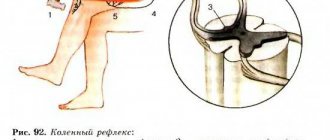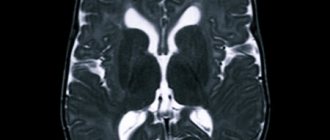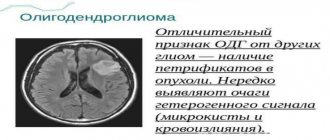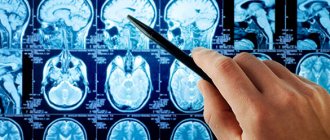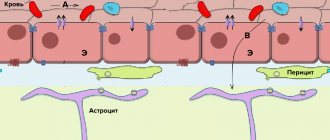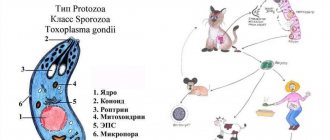The spinal cord , being part of the nervous system, acts as the main coordinator of the work of all organs and muscles. It is through it that the brain receives signals from throughout the body.
Spinal cord injury, or spinal injury, is damage to the internal contents of the spinal column: nerves, gray or white matter, meninges, blood vessels.
Back injuries often lead to spinal cord injuries. Spinal cord injuries account for about 15% of all nervous system injuries. Cervical spine injuries result in death in 30% of cases.
Damage can be open or closed (this depends on the integrity of the skin tissues).
Types of spinal cord injuries:
- shake,
- injury,
- hemorrhage in the spinal cord;
- destruction of the nerve roots,
- compression, displacement.
Injuries of a stable and unstable nature are distinguished separately. Fractures of the explosive type, rotation, dislocations and fractures of various degrees are considered unstable All these injuries are necessarily accompanied by rupture of ligaments, due to which the structures of the spinal column are displaced and the spinal roots or the canal itself are injured.
Spinal cord injuries are accompanied by disorders of the functions of internal organs. Immediately after receiving an injury, a malfunction of the nerve cells occurs, movement of the limbs becomes impossible, loss of sensitivity is observed, and partial paralysis .
Complications include hemorrhages into the spinal cord tissue and under the membranes of the spinal cord.
The function and integrity of the spinal cord may be impaired due to:
- falls from a height or accident;
- gunshot and knife wounds, blows;
- practicing some sports (motorsports, diving and others);
- tumors, malignant neoplasms;
- vascular aneurysm;
- congenital and postnatal abnormalities in the structure of the spinal cord;
- inflammatory processes;
- infections, neuroinfections;
- spinal circulatory disorders;
- arthritis;
- degenerative processes in the spine.
Symptoms of injuries depend on the type and location of the injury.
spinal cord injuries
Category: Neurological Nursing/Central Nervous System InjurySpinal cord injuries are usually associated with damage to the spine. They account for up to 15% of all injuries to the nervous system. The lower cervical, lower thoracic and lumbar regions are most often injured.
.
Like traumatic brain injuries, spinal cord injuries are classified into open and closed, penetrating and non-penetrating, with and without damage to the spine. Based on the severity of damage to the spinal cord, injuries are divided into concussion, contusion and compression
.
Complications of spinal cord injury are hematorahis
(bleeding under the membranes of the spinal cord) and
hematomyelia
(bleeding into the tissue of the spinal cord).
During a traumatic disease of the spinal cord, periods are distinguished: acute
(spinal shock lasts 2-3 days),
early
(impaired blood and lymph circulation, liquor dynamics, edema and swelling of the brain, lasts 2-3 weeks),
intermediate and late
(slow restoration of impaired functions , start from the 3-4th month). Recovery time depends on the severity of the injury. Cervical spine injuries result in death in 30% of cases.
Spinal cord injuries are accompanied by various disorders of the functions of internal organs: respiratory failure (due to pulmonary edema, pneumonia), liver function, kidney function, and gastrointestinal tract; intestinal paresis
.
The clinical picture depends on the severity of the injury.
Spinal concussion
-
the mildest form, in which short-term, reversible dysfunction occurs
. Characteristic: pain at the site of injury, weakness, numbness, paresthesia in the limbs.
Spinal cord contusion
-
accompanied by the appearance of focal symptoms: paresis and paralysis - peripheral in the area of the destroyed part of the spinal cord and spastic below the source of destruction;
conduction-type sensitivity disorders; pelvic disorders . A picture of a complete or partial break of the spinal cord is possible.
Spinal cord compression
—
occurs when the vertebral bodies or their fragments are displaced, with the formation of hematomas and cerebral edema
. The clinic is characterized by an increase in motor, sensory and trophic disorders below the level of damage.
To clarify the diagnosis, an X-ray of the spine and lumbar puncture are performed.
Treatment
If the spine is damaged, victims require urgent hospitalization. They cannot be lifted, sat down, or placed on their feet. It is necessary to examine the patient as carefully as possible and place him on a backboard; immobilize the spine with splints, hard objects, or use a vacuum stretcher.
In case of a fracture of the cervical spine, the victim is placed on his back, in case of a fracture of the lumbar and thoracic spine - on his stomach so that the back is straight. Then the patient must be taken to the hospital as quickly as possible. In parallel, the patient is administered painkillers - promedol, analgin, droperidol, fentanyl
;
dehydrating agents, anti-shock liquids, sodium hydroxybutyrate
. The medical institution conducts a clinical examination, x-rays of the spine and decides on surgical or conservative treatment.
The patient is prescribed strict bed rest; antibiotics, vitamins, corticosteroids, and nootropic drugs are administered.
.
From the very first minutes after injury, special attention should be paid to the prevention of bedsores and urosepsis. In case of urinary retention, catheterization of the bladder is indicated with mandatory rinsing of it with solutions of potassium permanganate, furatsilin
.
See central nervous system injuries
Saenko I. A.
Sources:
- Nurse's Handbook for Care/N. I. Belova, B. A. Berenbein, D. A. Velikoretsky and others; Ed. N. R. Paleeva. - M.: Medicine, 1989.
- Bortnikova S. M., Zubakhina T. V. Nervous and mental illnesses. Series 'Medicine for you'. Rostov n/d: Phoenix, 2000.
- Martynov Yu. S. Neurology: Textbook. ed. 4th, rev. and additional - M.: RUDN, 2009.
Symptoms of concussion and spinal cord contusion
- sharp and severe pain at the site of injury;
- weakness;
- numbness in the limbs;
- pain in the spine;
- loss of sensitivity in certain areas of the body, in the area of the destroyed part of the spinal cord;
- motor dysfunction;
- involuntary emptying of the bladder or bowels ;
- breathing problems ;
- spasms below the destruction zone;
- loss of consciousness;
- curvature of the back/neck;
- partial paralysis.
Compression of the spinal cord occurs when the vertebral bodies or their fragments are displaced, as well as when hematomas form and cerebral edema. There may be loss of sensory activity and inability to move limbs or the entire body.
The most complex injuries lead to disorders of the intestinal organs, urinary system, respiratory systems and blood vessels. Often, victims suffer from chronic pain.
Spinal cord injuries affect not only the physical level, but also the psychological one. A person may experience impaired reaction speed, poor coordination, sudden mood swings, aggression, fear or a feeling of loss, anxiety, decreased appetite , and depression.
The most serious consequences of spinal cord injury are:
- paralysis of the whole body or individual parts;
- disability;
- Difficulty with digestion and bowel movements;
- deep vein thrombosis
- bedsores;
- muscle spasticity (constant tension);
- Impaired lung function (breathing problems).
Important! Any back injury requires urgent contact with a doctor, an ambulance or the nearest emergency room. After any spinal injury, immediate care is extremely important. The sooner a qualified neurosurgeon stops the pathological process in the spine, the less pronounced the consequences will be. Do not delay rehabilitation measures to eliminate long-term consequences of a spinal cord injury.
To clarify the diagnosis, radiography , and, if necessary, computed tomography and magnetic resonance imaging (CT, MRI), which can help identify blood clots in the spinal substance. An X-ray of the spine will help determine the location of the injury and the type of injury. A lumbar puncture (lumbar puncture, spinal tap, lumbar puncture) and myelography may also be needed.
Hematomyelia is bleeding in which blood may accumulate in a hematoma, or fill a component of the spinal cord. It spreads along it, causing the destruction of nerve tissue, compression of motor pathways and brain structures. Causes partial damage to the spinal cord, but can affect the entire diameter. Accompanied by excessive bleeding into the space of the brain.
Spinal cord injuries (injuries)
Spinal cord damage can be complete or partial. With a partial injury, the spinal cord can transmit some messages to and from the brain, so patients retain some sensation and some motor function below the injury. With a complete injury, there is a complete or almost complete loss of motor functions and sensitivity below the damaged area.
Symptoms and signs of spinal cord injury:
- intense burning and pain caused by damage to the nerves of the spinal cord;
- loss of motor function;
- loss of sensation;
- spontaneous bowel and bladder emptying;
- stomach cramps or excessive reflex activity;
- violation of sexual and reproductive function, sexual sensitivity;
- cough and coughing up pulmonary secretions, difficulty breathing.
Spinal cord lesions can be traumatic or non-traumatic.
Traumatic injuries occur after a sudden blow to the spine that compresses, displaces, fractures or destroys one or more vertebrae. Knife or gunshot wounds to the spine can also lead to such consequences.
Non-traumatic injuries can be caused by tumors, arthritis, inflammation or infection of the spinal cord, problems with blood vessels or bleeding, or degenerative diseases of the spine.
Regardless of the nature of the damage, they affect the nerve fibers that pass through the affected area, partially or completely disrupting the functioning of the muscles and nerves located below. Damage in the area of the cervical vertebrae leads to disruption of the motor functions of the upper and lower extremities and respiratory function. Injuries to the lower back cause leg problems, loss of bowel and bladder control, and sexual dysfunction.
If a spinal cord injury is suspected, first aid to the victim is to immobilize the spine until a diagnosis is made after examination. Immobilization of the spine is necessary to prevent damage to it or the development of an existing injury. Rigid collars are used to secure the neck, and the patient is transported on a rigid board.
To study traumatic injuries of the spinal cord, CT, MRI, X-ray and myelography are used. Some time after the injury, a neurological examination is performed to determine its severity and likelihood of recovery.
To date, there are no technologies that can cause regeneration and restoration of damaged nerve fibers of the spinal cord.
But they make it possible to increase the likelihood of a favorable outcome and reduce the duration of treatment. Author: K.M.N., Academician of the Russian Academy of Medical Sciences M.A. Bobyr
Danger of spinal cord rupture
Spinal cord rupture is an extremely serious and painful condition that leads to disability and threatens a person’s life. When the spinal cord is ruptured in areas of the body below the rupture site, communication with the brain is disrupted and they lose their functions. Also, many patients are interested in the question: will there be spasticity if the spinal cord is ruptured? If such a phenomenon is observed, then the likelihood of restoring lost functions increases. However, spastic phenomena require strict control and should not be neglected.
Spinal shock is a particularly serious condition when the spinal cord is ruptured. The spinal cord is temporarily “switched off,” and along with it the entire body. In this state, only the heart and lungs work, acting autonomously. During spinal shock, it will not be possible to test reflexes, sensitivity , and determine the degree of damage to nerve fibers. This condition cannot be predicted and can last from several weeks to several months. At this time, it is necessary to support the body and take measures to prevent bedsores and muscle atrophy.
A rupture of the spinal cord poses a direct threat to human life. If the most difficult period can be survived, the person will need to undergo a long course of rehabilitation to adapt to life with a disability.


